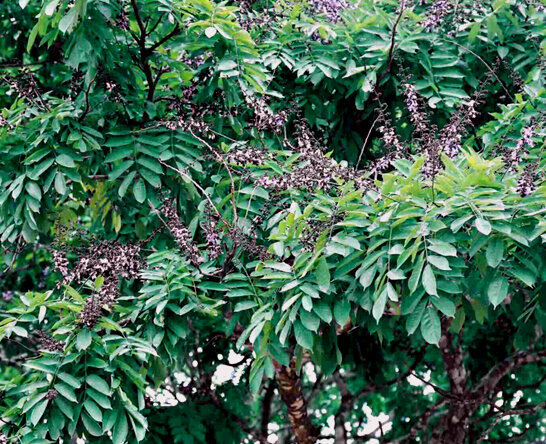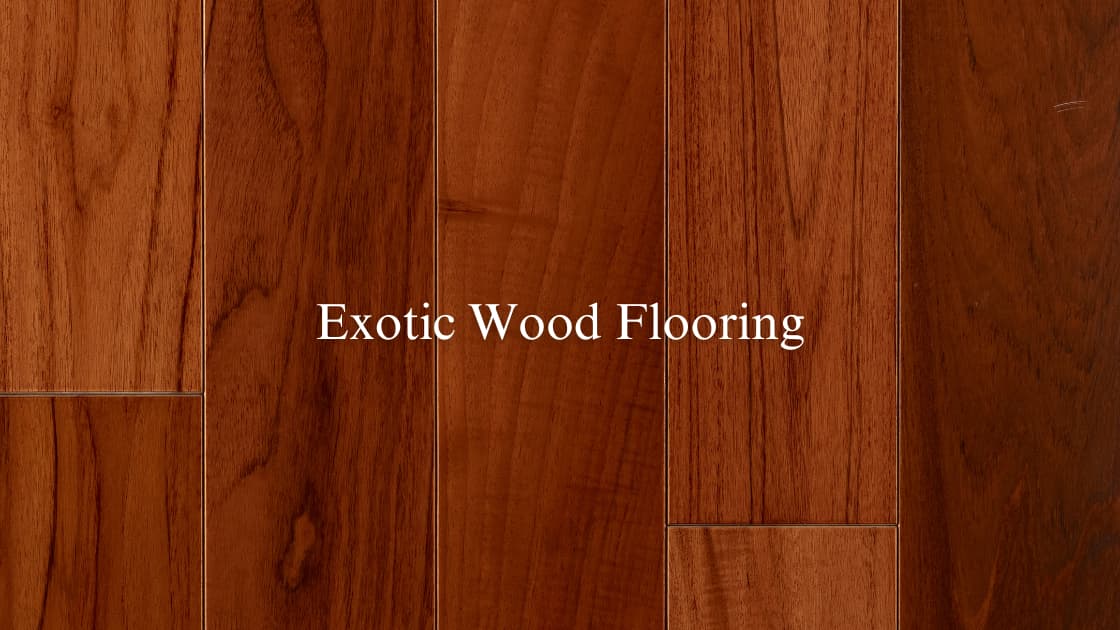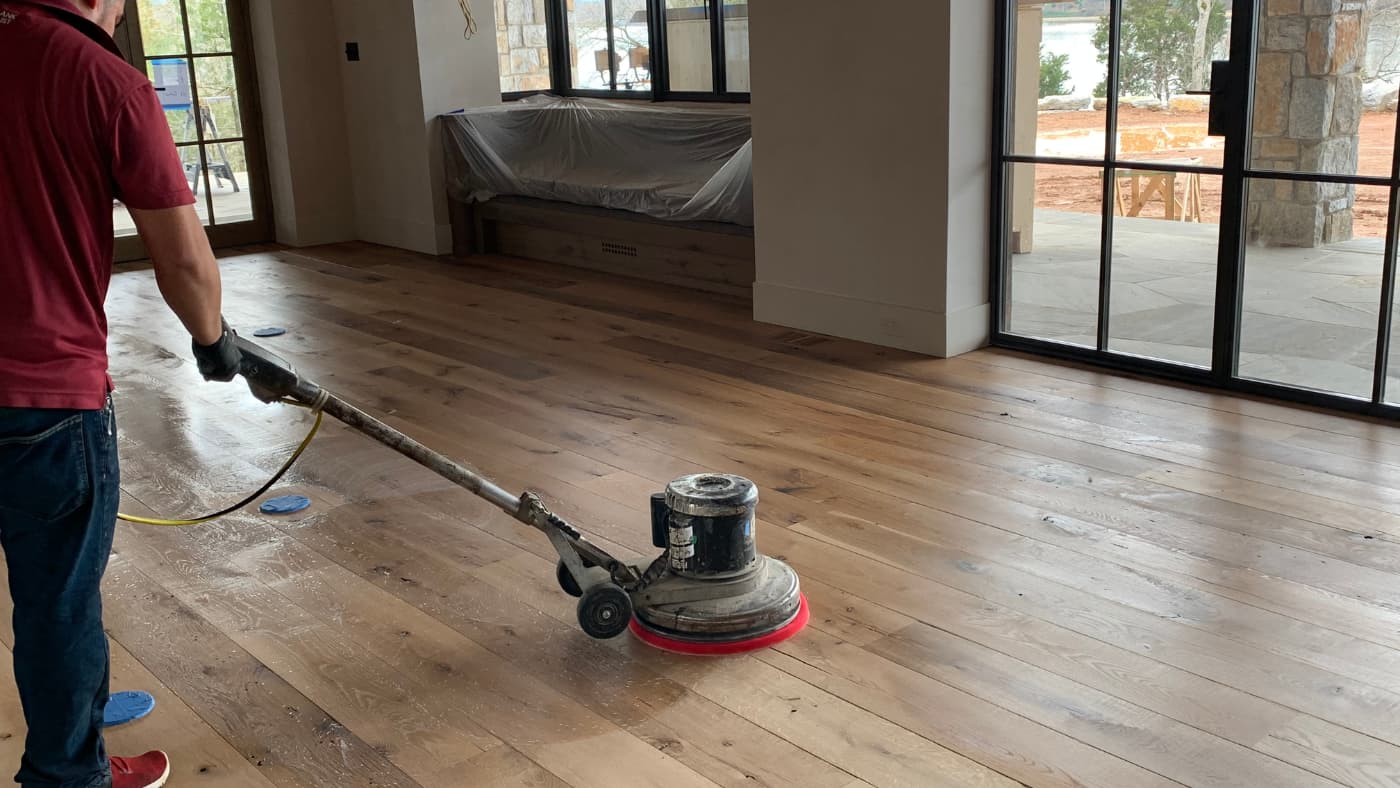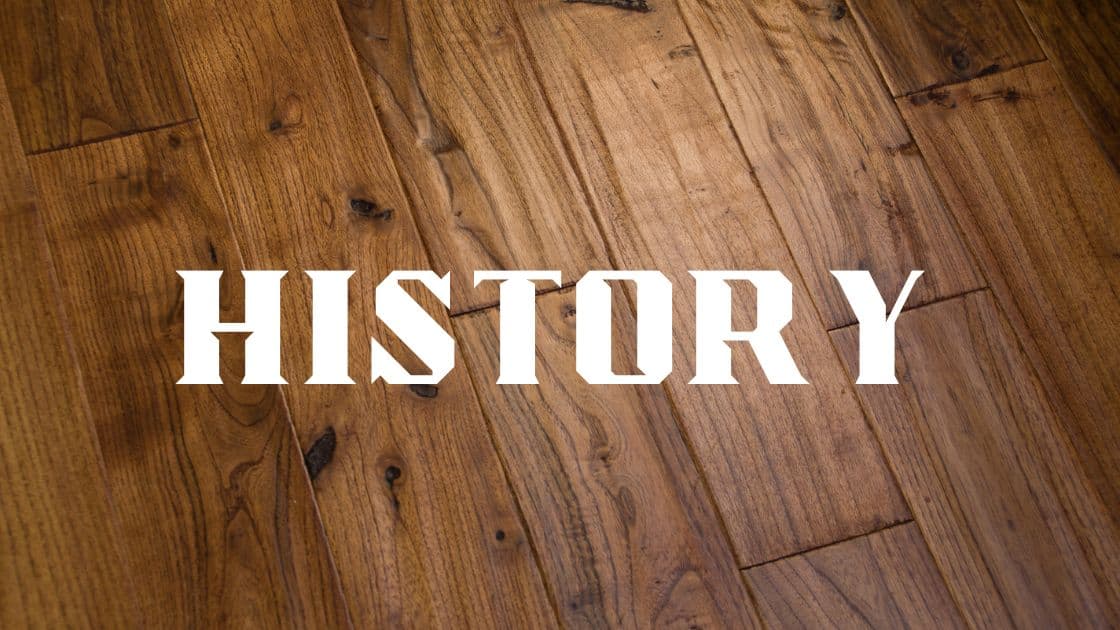Featured Species: Bubinga (African Rosewood)
Are you ready for something exotic? Let’s talk about Bubinga, or as many refer to it, African Rosewood.
Truthfully, there are a lot of different trees and wood species, even small plants, that people call African rosewood. So, if you are looking for African Rosewood lumber for your flooring, you are sure to get all kinds of variations in color and grain patterns. For this featured species article, we will specifically discuss wood from trees in the Guibourtia genus.
Bubinga facts
Location: Generally found in Central and Western Africa in places like Cameroon, the Ivory Coast, and Gabon.
Names: In addition to being called “African Rosewood,” it can also be known locally as kevazingo, eban, akume, essingang, buvenga, amazakone, ovang, okweni, and waka.
Size: Trees in the Guibourtia genus can grow up to 150 feet tall and be almost 6 feet wide.
Interesting fact: Bubinga can cause skin irritation in some people – so make sure you aren’t allergic to it before you install it as flooring!
Bubinga Uses
Bubinga has a wide variety of uses outside of the flooring industry. For example, it is often used in high-end furniture, boat building, and musical instruments.
Take a look at this gorgeous piano made from African Rosewood


Or how about this Mini Rosewood Guitar
Bubinga as Flooring
The color: As previously mentioned, African Rosewood can be any of several species, so the color can vary greatly. The darker heartwood can range from a pinkish tint to a dark red/brown with dark purple or black streaks. The lighter sapwood can have a lighter greyish-white, light yellow, or ivory color. Like many other exotic species, the colors tend to darken over time, especially with exposure to light. Some techniques can prevent or at least lessen this darkening process, but you’ll want to talk to your hardwood flooring specialist about your goals and whether or not those techniques would be cost effective.


You can also apply stains and finishes to this species, which it will take to rather nicely. However, it can take longer to dry than other wood species, so you’ll want to plan accordingly.
The grain: Generally, the grain is relatively straight with larger pores. However, Bubinga is known for its occasional striking patterns, including flaming, pomelle, quilting, waterfall, and mottle. The grain also has a natural luster, producing a gentle, reflective sheen or soft glow.
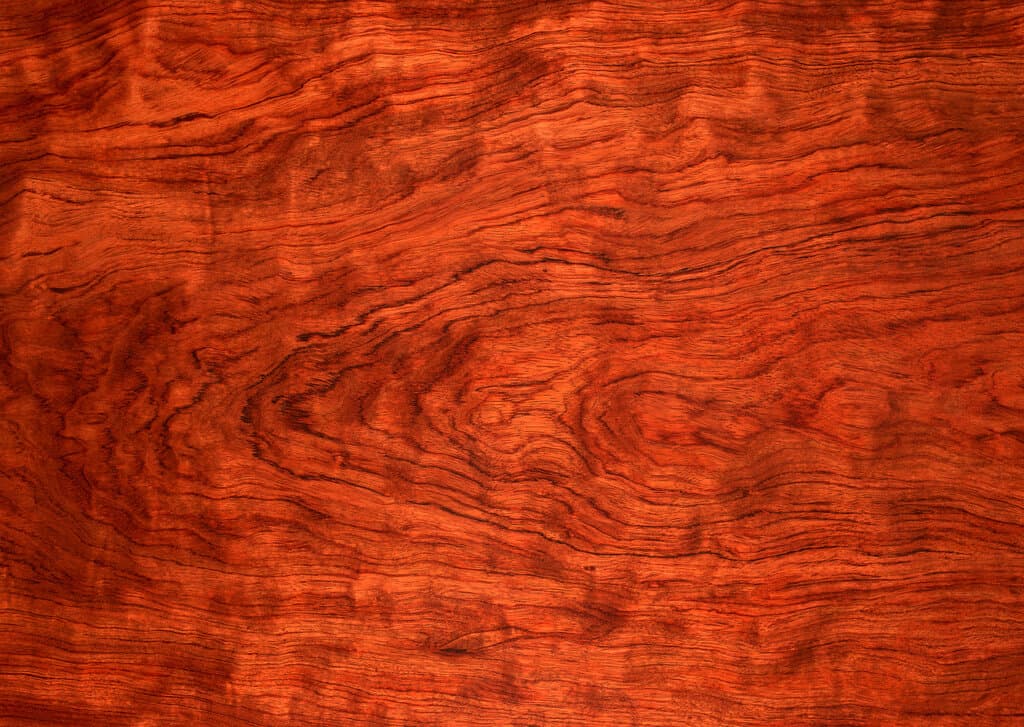

How it holds up: Bubinga is rather hard, ranking 2,410 on the Janka scale. For comparison, White Oak comes in at 1,360 on the Janka scale and is considered a durable hardwood. Because of its hardness, it can be challenging to install, requiring special equipment and fastening and cutting techniques. The silica in the wood can damage blades or drill bits, and because of the natural oils in the wood itself, glue can have a hard time adhering. It also requires additional steps when sanding and extra care to minimize scratch patterns.
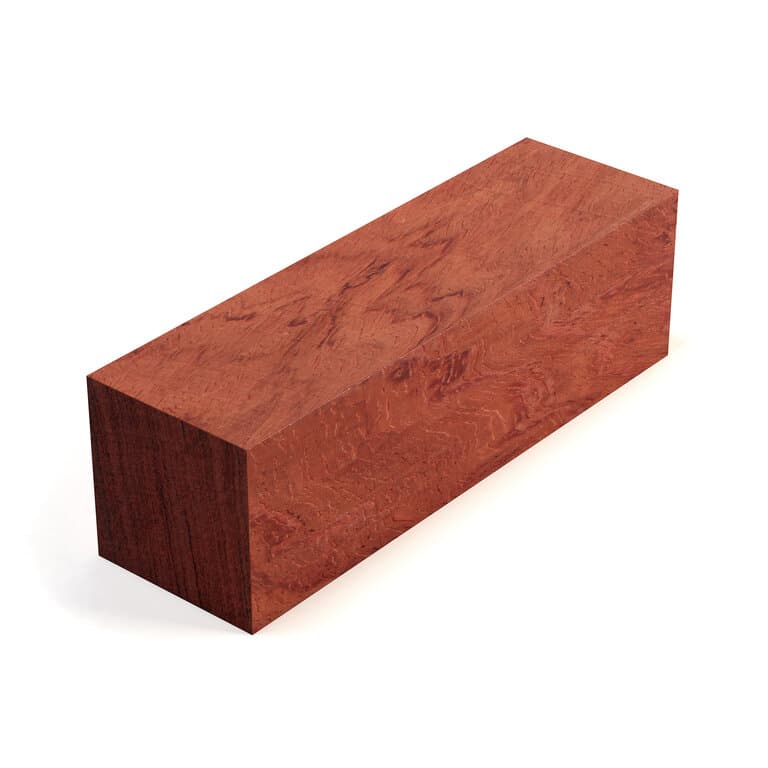

While it is clear that installing Bubinga can be difficult, this wood would undoubtedly add to the wow factor of your home with its beautiful colorations, unique grain patterns, and breathtaking sheen. If you are interested in Bubinga for your home or business, we would be happy to discuss your options. Give us a call or fill out our free consultation form to speak to a hardwood floor specialist today.


